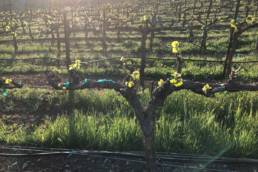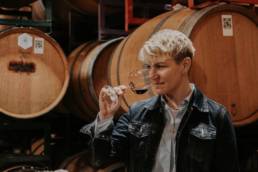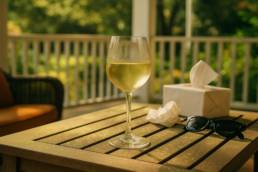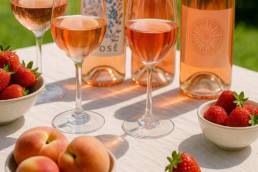FMN – August 2021 – Back to School
Considering the time of year, we should relish in the extreme luck bestowed upon us. Thus far, we have not seen the fury of a “named” storm, football breaches the horizon, and there seems to be a slight hiatus in the “streets-of-Delhi” like heat. Most importantly, the kids are heading back to their daytime educational villages, we call schools.
With the house vacant and “short-pants” weather continuing, I turn first to the crisp vibrant flair of a New Zealand Sauvignon Blanc. I know I’ve recently discussed these wines but they frustratingly still have not fully returned to their former retail glory. Granted, there are some producers that overcropped to take advantage of the popularity of the 1990s, leading to diluted, overtly pungent and uninteresting wines of the last decade. Fortunately, many quality-minded vintners stayed the course and these New Zealand Sauvignon Blancs can be spectacular.
The increased UV rays due to the hole in the ozone offer a unique environment for these grapes. That along with careful canopy management allows the grapes to fully ripen but maintain some of their “greenness” from the pyrazines. In the winery, careful temperature control, stressing the yeast, and encouraging a slightly reductive environment all help with thiol production. These elevated thiol levels convey as a pungency as well as aromas of passion fruit and grapefruit. This classic aromatic typicity of Marlborough Sauvignon Blancs keeps me coming back for more.
Another misunderstood yet seductively acidic variety is the Pinot Gris. I’ve been questioned about the difference between Pinot Gris and Pinot Grigio. They are the same grape but the variances in name give a hint to the stylistic differences. Although I love the refreshing vibrant Italian version, there is something haunting about the riper, fuller bodied and honied character of the Pino Gris. Although one could argue some of the best hail from Alsace, domestically, Oregon has adopted this variety as their signature white and have not disappointed.
As many of you know, I have an unhealthy relationship with sparkling wines. What you may not know, and you may judge me accordingly, is my summertime affinity with inexpensive Prosecco. I do love aged Champagnes and the tart bite of a good Cava but the fruit forward, easy glugging thoughtless consumption of over-chilled inexpensive Glera grape brings a Duchenne smile to my face.
I think the attractiveness, beyond the price point, lies with its simplicity. The wines undergo their second ferment in stainless, rather than bottle, retaining and accentuating their primary fruit characteristics. Although the bubbles are slightly more aggressive than traditional method sparklers, I find that quite refreshing rather than off-putting, especially when I’m red solo cupping by any body of water (including a pool).
For the entrenched red-wine-only club, don’t fret, you too have consumption options. Many will turn toward a Pinot Noir, and I find that an acceptable choice, even with a bit of a chill on it. Recently, however, I have rediscovered a variety that I’d forgotten about for far too long, Mencía.
This variety may seem unfamiliar due to its scarcity outside the Iberian Peninsula. Found mostly in northwestern Spain and select areas of Portugal (known as Jaen), only recently have we seen some domestic planting in California and Oregon. Recently these wines are getting more shelf time due to an increase in quality by well-respected Spanish producers. The fact that this variety builds alcohol and loses acidity quickly towards end ripening, makes for a difficult task of balancing the end wine; a factor limiting its viticultural spawl in other countries. When handled with care, these wines can produce crisp light red-fruit driven wines or, with older vines and oak age, rich black fruit and herbal laden treats.
With the sounds of silence returning to your abode, don your “comfortable” clothes and spill a little juice. A bit of day-sipping can be both helpful and enlightening. Also, since now the younger ears are not around, feel free to release those curse words you’ve been keeping pent up. Just refrain from using that terrible and ill-defined “M” word…moderation.
Suggested wines
Whitehaven Sauvignon Blanc 2020 Marlborough, New Zealand $17.99
This wine, in my humble opinion, offers a broad view of what New Zealand Sauvignon Blanc has to offer. The nose has overt aromatics: the typical pungency and gooseberry, along with tropical fruits (passionfruit, grapefruit) and stone fruit (white peach). Obviously someone took the time to develop and preserve the thiol levels in these wines. The palate is perceptibly dry but slightly more viscous than one might expect. Perhaps it’s a nod to the residual sugar at 3 g/L helps increasing mouthfeel as well as balancing the tart jagged, prickly acidity. Flavors mirror the nose along with a wet stone minerality. The wine finishes with a grapefruit / passionfruit pleasant linger. The wine begs for food (goat cheese, clams, and summer salads) or because you are by the pool without kids.
Sokol Blosser Pinot Gris 2019 Willamette Valley, Oregon $18.99
The nose has concentrated aromas of citrus / citrus blossom (orange, orange blossom), honeydew, and orchard fruit (peach nectar). The palate is dry with a vibrant, electric mouth-watering acidity that continues throughout. The body has an evident viscosity and full midpalate, attributed to the extended lees (expire yeast) contact. Flavors of citrus, melon, and pear continue with an interesting saline minerality on the finish. Pair this wine with smoked fish, brined pork chops, or grilled shrimp. Although it would make a great “car line” sipper, it’s probably not the best idea.
Poggio Costa Prosecco Prosecco DOC, Italy $12.99
This 100% Glera sparkling is bottled in Veneto and has a persistent, lively mousse. Aromas of orchard fruit (yellow apple and pear), citrus (tangerine) and a slight honeysuckle note. The palate is off-dry and the barely perceptible residual sugar is well hidden behind the crisp, tart acidity. The wine finishes with a lingering tangy, citrus (tangerine). At only 11% abv, you can consume with (almost) blatant disregard. These wines pair well with creamy cheeses (brie), charcuterie meats, and gossip conversations with your friends.
Descendientes de Jose Palacios Petalos 2019 Bierzo, Spain $21.99
One first notices the vibrant purple color, a testament to the wine cold soaking on the skins. The aromas are complex and overt with fruit (blackberry, elderberry and currant), herbs (mint and thyme), floral (violet) and spice (pepper). The palate is dry with elegant silky fruit, tart crunchy acid and a lighter than expected body. The flavors mirror the nose with the addition of minerality. The tannin structure is chalky, firm and felt on the cheeks but by no means overly mouth-drying. The finish is clean, silky and filled with the same chalky mineral tones. This wine loves grilled dry-rubbed ribs, pork tenderloin, Cecina, or school night bed times.




